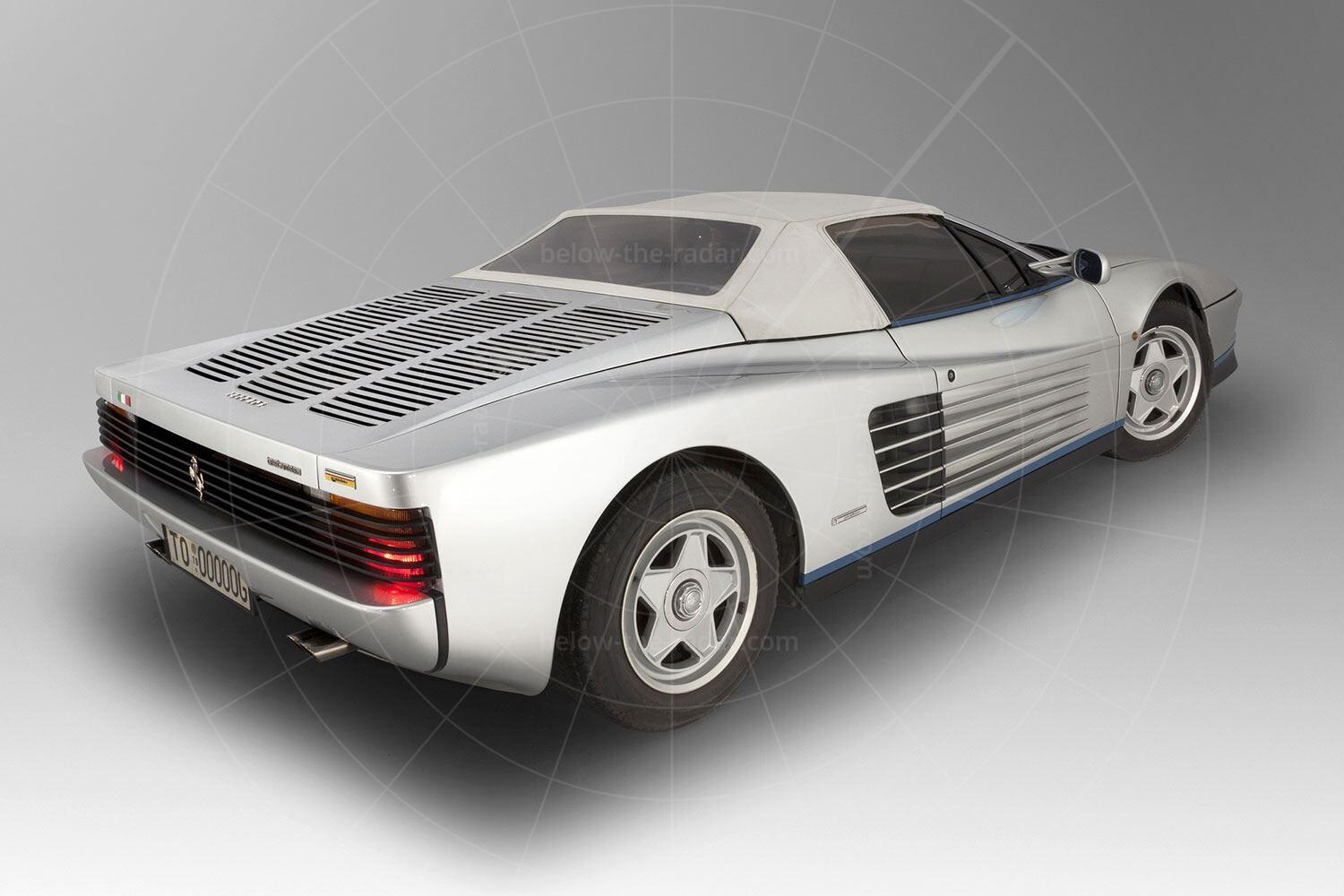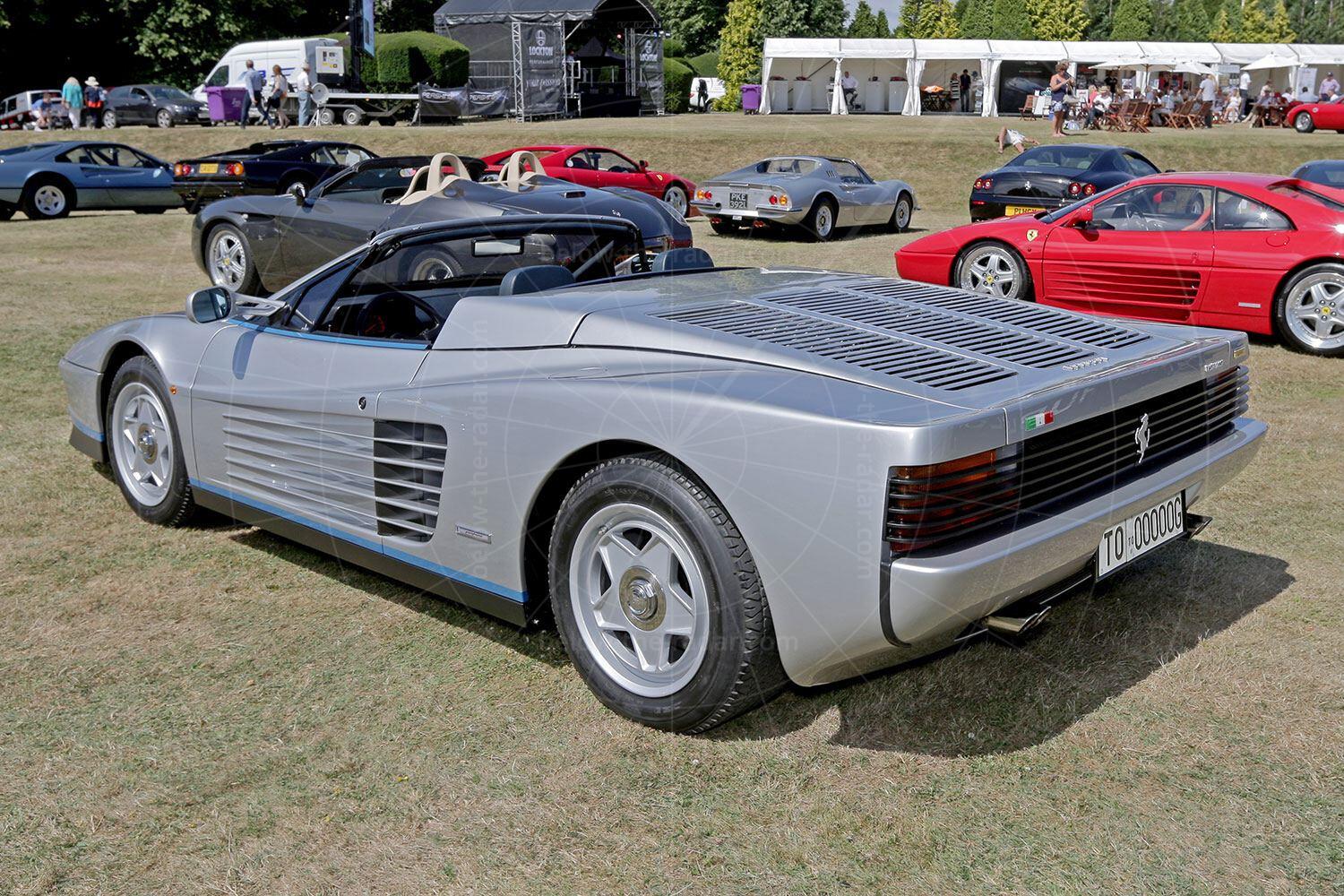The Ferrari Testarossa was launched straight into a world of excess. The second half of the 1980s was a time of flaunting wealth and few cars did as good a job of this as the sensationally low and wide Testarossa, with its mid-mounted flat-12 engine and in-yer-face cooling slats. But the Testarossa came only with a fixed roof and there were plenty of people who wanted something open to the elements. A raft of companies were happy to slice open these most costly of Ferraris, including Straman, Pavesi, Lorenz & Rankl along with Koenig and Eurotech, while EBS in Belgium created a targa edition. Ferrari didn't offer an open-topped Testarossa of its own, but it did create the one pictured here for Gianni Agnelli to mark the 20th anniversary of him taking over at the helm of Fiat.
Agnelli's father was the prominent Italian industrialist Edoardo Agnelli and his mother was Princess Virginia Bourbon del Monte, daughter of Carlo, fourth Prince of San Faustino, head of a noble family established in Perugia. Agnelli was named after his grandfather Giovanni Agnelli, the founder of Fiat. Gianni, as he was known to differentiate him from his grandfather, inherited the command of Fiat and the Agnelli family assets in 1966, following a period in which Fiat was temporarily run by Vittorio Valletta, while Gianni was learning how his family's company worked. Agnelli developed Fiat into the most important company in Italy, and one of the major car makers of Europe. He also developed an accessory business, with minor companies also operating in military industry.
Agnelli owned the Italian football club Juventus, and was nicknamed L'Avvocato (The Lawyer) as he had a degree in law, not that he was a practising lawyer. The most important figure within the Italian economy and a symbol of capitalism throughout the second half of 20th century, Agnelli was regarded by many as the uncrowned King of Italy. A cultivated man of keen intelligence and a peculiar sense of humour, he was perhaps the most famous Italian abroad, forming deep relationships with international bankers and politicians.
Agnelli was in charge of most of Italy's car industry, including brands as diverse as Fiat, Alfa Romeo, Lancia, Maserati and Ferrari, and against this backdrop it was inevitable that he would build up an enviable collection of cars, many built specially for him and given to him as gifts. One of them was a unique Lancia Delta Integrale convertible, while there was also a 130 'Familiare' estate along with a set of leisure-oriented Fiat Pandas. And then there was this Ferrari Testarossa, #62897, the construction of which began in February 1986. Four months later, on 16 June, the car was presented to its new owner, complete with the personalised registration TO 00000G.
The service book, in the name of IFI Spa (the financial company owned by Agnelli), recorded the warranty as starting on 13 June 1986; by 18 March 1987 the car had been registered in Agnelli's name. He retained the car until his death in 2003, when the Spider was sold to one of his friends, whose children then decided to sell the Testarossa Spider at Artcurial's Retromobile auction in February 2016, where the car realised €1,210,080 including taxes and buyer's premium. The following year, in summer 2017, this car was on display at the Ferrari Owners' Club of Great Britain's annual concours.
At the point that the Testarossa was auctioned off it had covered just 23,000 kilometres and the car was exactly as it had left the factory. That meant the interior was still swathed in blue leather while the bodywork was painted silver, chosen because of its periodic table abbreviation of AG – Gianni Agnelli's initials, albeit transposed. Around the car is an array of blue highlights to complement the interior; there are blue stripes running around the bottom of the Spider, as well as the uppermost panels.
The Testarossa's interior is pretty much untouched compared with the regular car's and the same goes for the mechanicals, which means there's a 4943cc flat-12 behind the two occupants. With the standard 390bhp on tap the Testarossa Spider is reckoned to be noticeably slower at the top end compared with a fixed-head edition, because of the weight added by all of the strengthening required to reduce scuttle shake to a minimum.
Where this car does differ from every regular Testarossa ever made, is its transmission, which was originally developed for Lancia's rally cars before finding its way on to a small number of Ferrari Mondials. A button on the centre console allows the clutch pedal to retract and in the process it gives way to an automated Valeo set-up. A serious car accident in his youth left Agnelli with a problem with his left leg, which is why an automatic gear changing mechanism was developed so the gearbox could be used more comfortably. This special system was also fitted to the F40 built specially for Agnelli three years later, and as on this Testarossa, the driver can choose between changing gear manually or, by pressing a button, activating the Valeo electronic clutch system.
The biggest task with this car though was not accommodating the transmission, it was engineering the folding soft top when the Testarossa was never designed to be opened up. The system for lowering the roof was cleverly thought out, with a hood that folds easily under an integrated hard tonneau cover, the soft top frame being raised and lowered electrically.
Those lucky enough to have driven the unique factory-sanctioned Testarossa Spider claim that while the clutch and (unassisted) steering are both heavy at low speeds, once you're going faster this is a car that's incredibly easy to drive, things helped by the massively torquey engine negating the need to change gear too often. Rock steady even when travelling at well over 100mph, the Spider was the perfect vehicle for Agnelli to cruise at high speeds along the autostrada, not that he ever got to drive his Testarossa Spider all that much.
Now the Testarossa Spider resides in the UK, having been bought by a London-based enthusiast at Artcurial's auction. Many thanks to Artcurial for the use of its pictures to illustrate this article.


























